Today we have a guest post from James White, a self-described kombucha tea-sipping blogger who focuses on green building and sustainable living via his family blog Homey Improvements. He’s offering advice on how to prune tomatoes for those who are pruning-averse. Take it away James!
How to Prune Tomatoes
The first year I planted tomatoes they all died. Year after year, I’ve made every mistake you possibly can when it comes to tomatoes but I’ve learned so much that now I always have a bountiful tomato harvest! I want to share a few of those lessons on pruning tomatoes so that you don’t make the same mistakes I did.
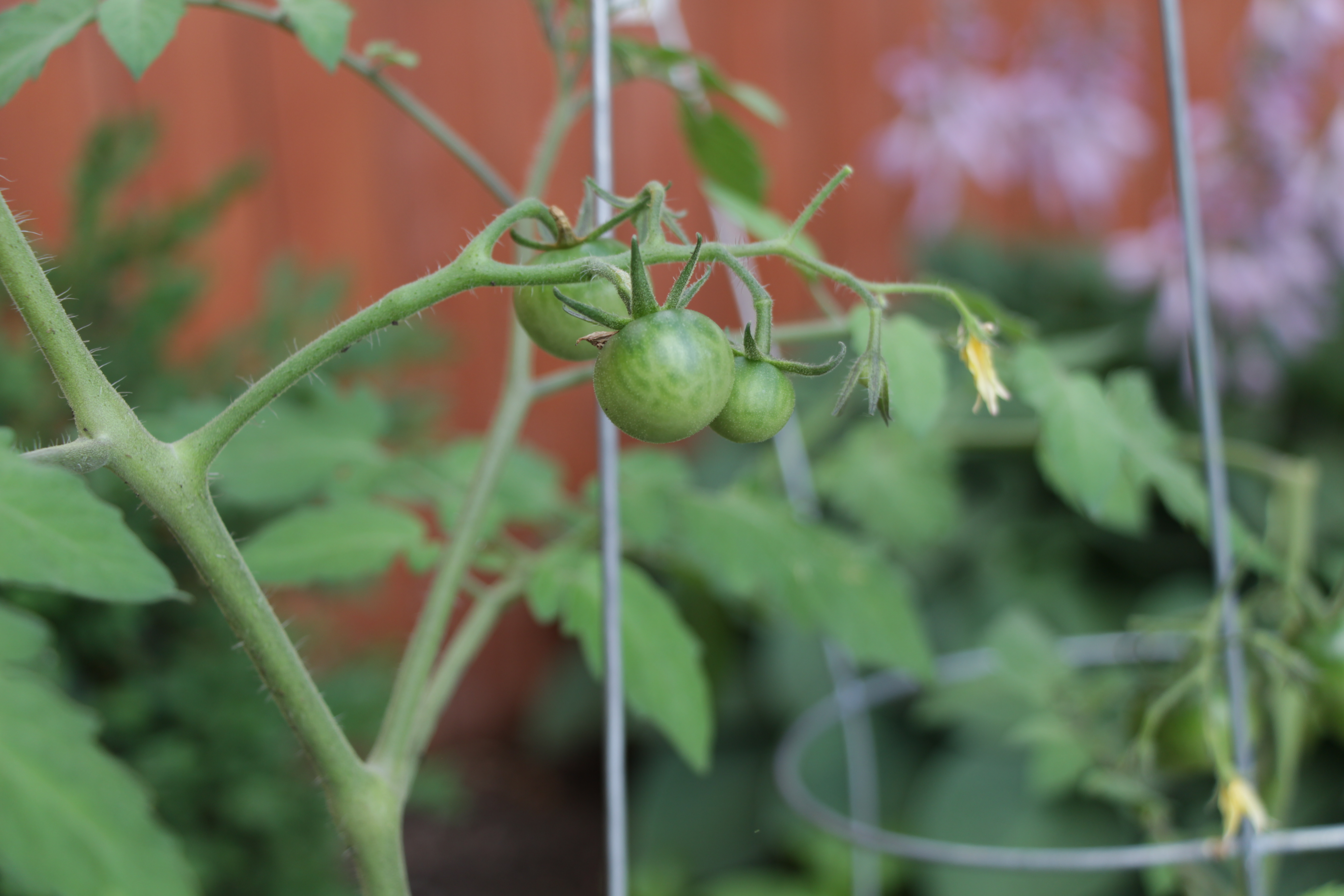
Tomato plants are a nightshade, which may irritate the skin of some people–which is why I fully recommend gloves. Before you start clipping, make sure that your pruning shears have been disinfected since the last time they were used. One season I made the mistake of using pruning shears that had been used on diseased plants without sterilizing–spreading disease to my previously uninfected plants.
- Identify Your Plants
Not all tomatoes will need to be pruned, so identifying which type of tomatoes you have growing is critical to the health of your plants. Pruning tomatoes that don’t need it can be detrimental to production.
- Indeterminate tomatoes include most cherry tomato and heirloom tomato varieties, along with Big Boy, Early Girl and Beefmaster hybrid (editor’s note: and patented) tomatoes. These plants grow continuously upward, and will produce fruit throughout the entire season.
- Determinate tomatoes are commonly referred to as bush tomatoes, and have a shorter growing season. Common bush tomatoes include the Better Bush variety and Heinz Classic. Determinate tomatoes do not require pruning.
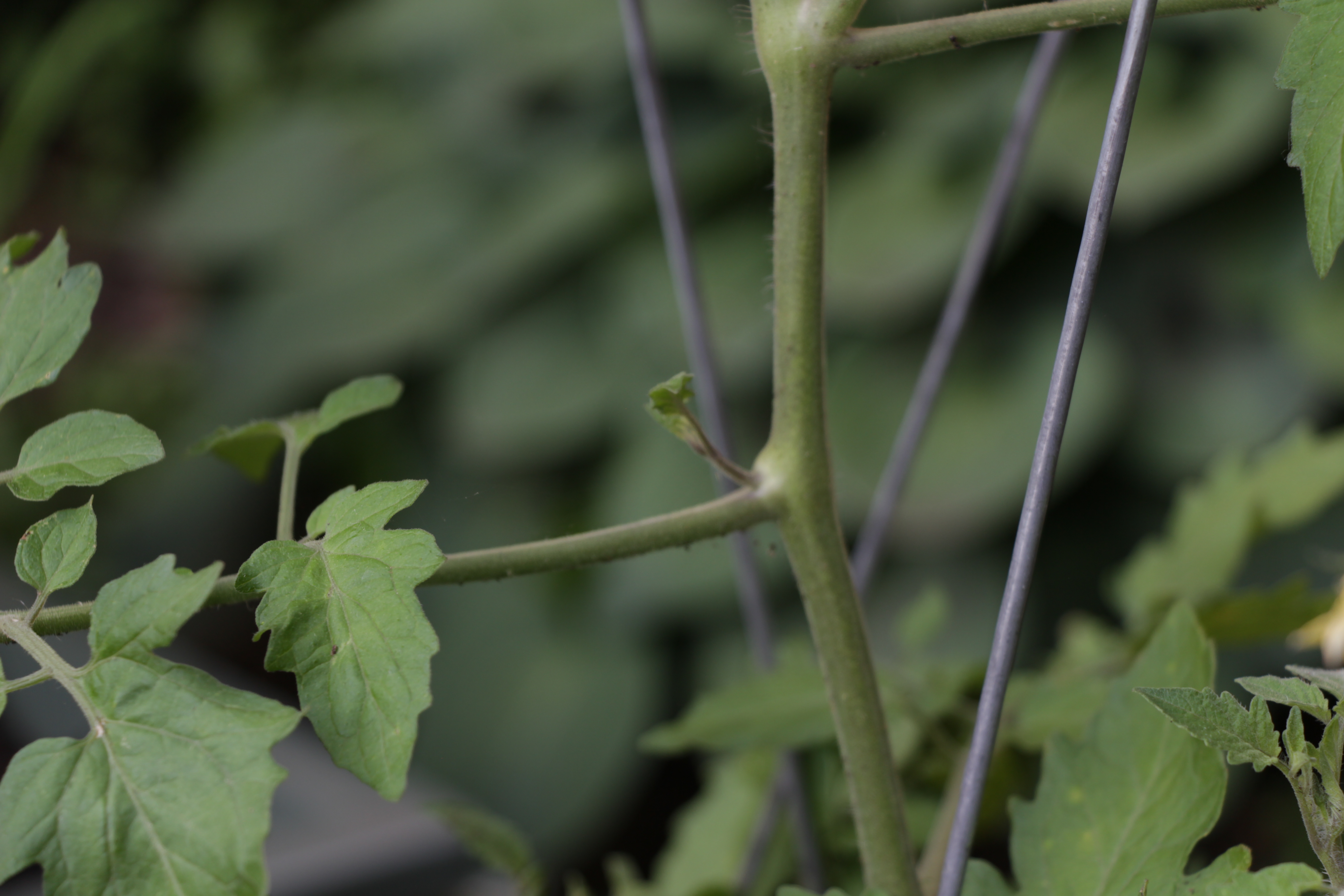
- Find New Growth
Look for tiny new branches that have begun to form where the branch meets the stem. These suckers, as they’re called, are what you want to get rid of.
- If left to grow, these suckers will steal nutrients from the rest of the plant, causing it to produce less fruit.
- Removing suckers will allow your plant to produce larger tomatoes for a longer period of time.
- Remove Growth
Removing new growth keeps the central stem of the plant strong; this will ensure that the growing fruits are receiving nutrients.
- To remove small suckers grab by the base between the thumb and forefinger – bending back and forth until it snaps off cleanly from the plant.
- Suckers grow quickly and may need to be pruned once or twice a week to remove new growth and keep your plant healthy.
- In humid environments, any leaves below the first flower cluster should be removed to increase ventilation and prevent diseases. I would even do this on determinate tomatoes if you notice them starting to yellow or chewed up by bugs.
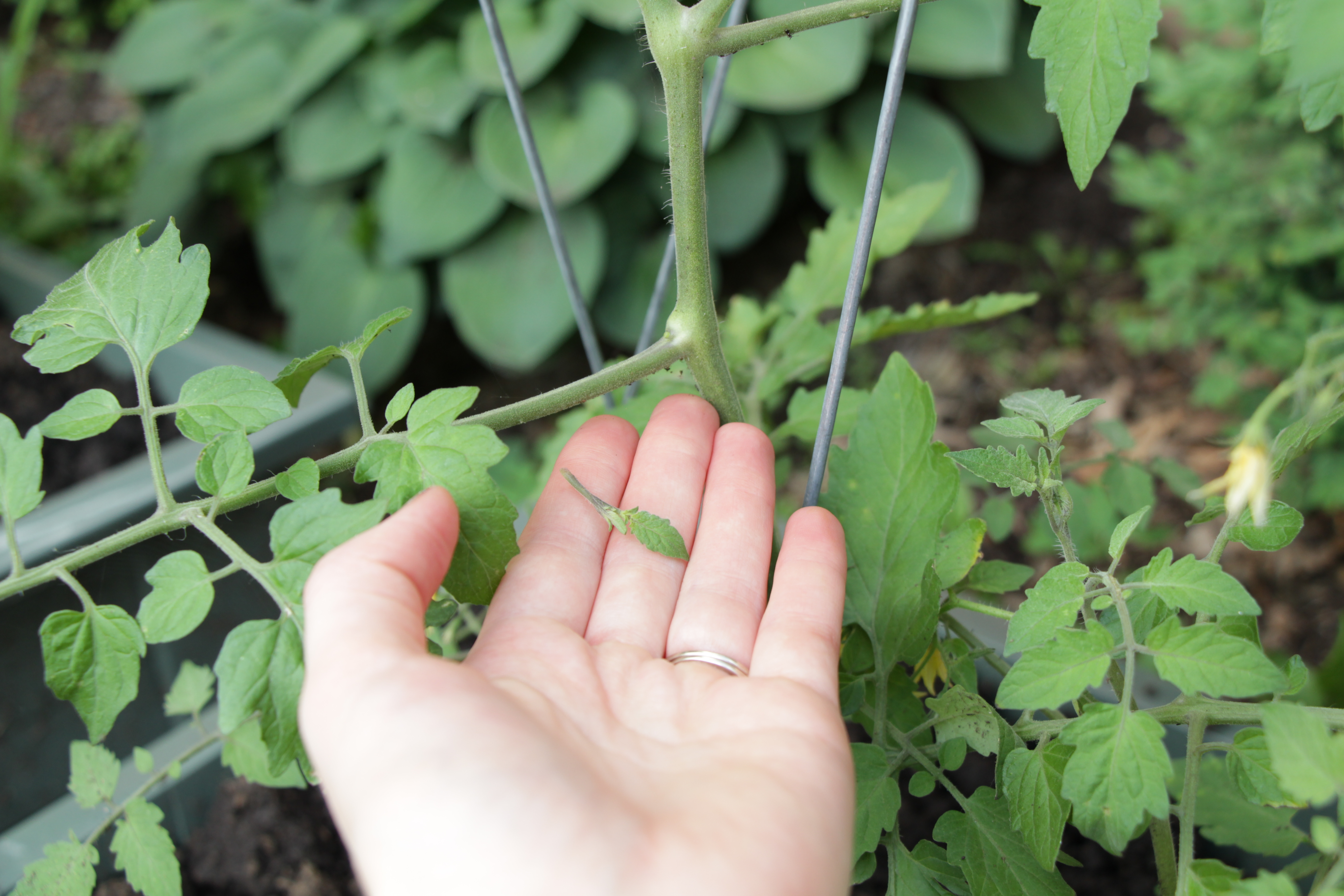
- Remove Yellowing Leaves
The lower leaves of your plant may wilt and turn yellow as the plant matures, since it’s focusing on producing fruit. Pulling these leaves from your plant as they appear will keep your plant happy and healthy.
- Top the Plant
- Cut the top of your plants when they grow too tall or begin to reach over their cages.
- Topping your plants can also help at the end of the growing season. By removing any unnecessary growth, you allow the plant to use its nutrients to grow tomatoes.
Once you know how to prune your plants, you’ll be able to maintain happy and healthy plants through the entire growing season.
Find James White on Twitter @DIYfolks.

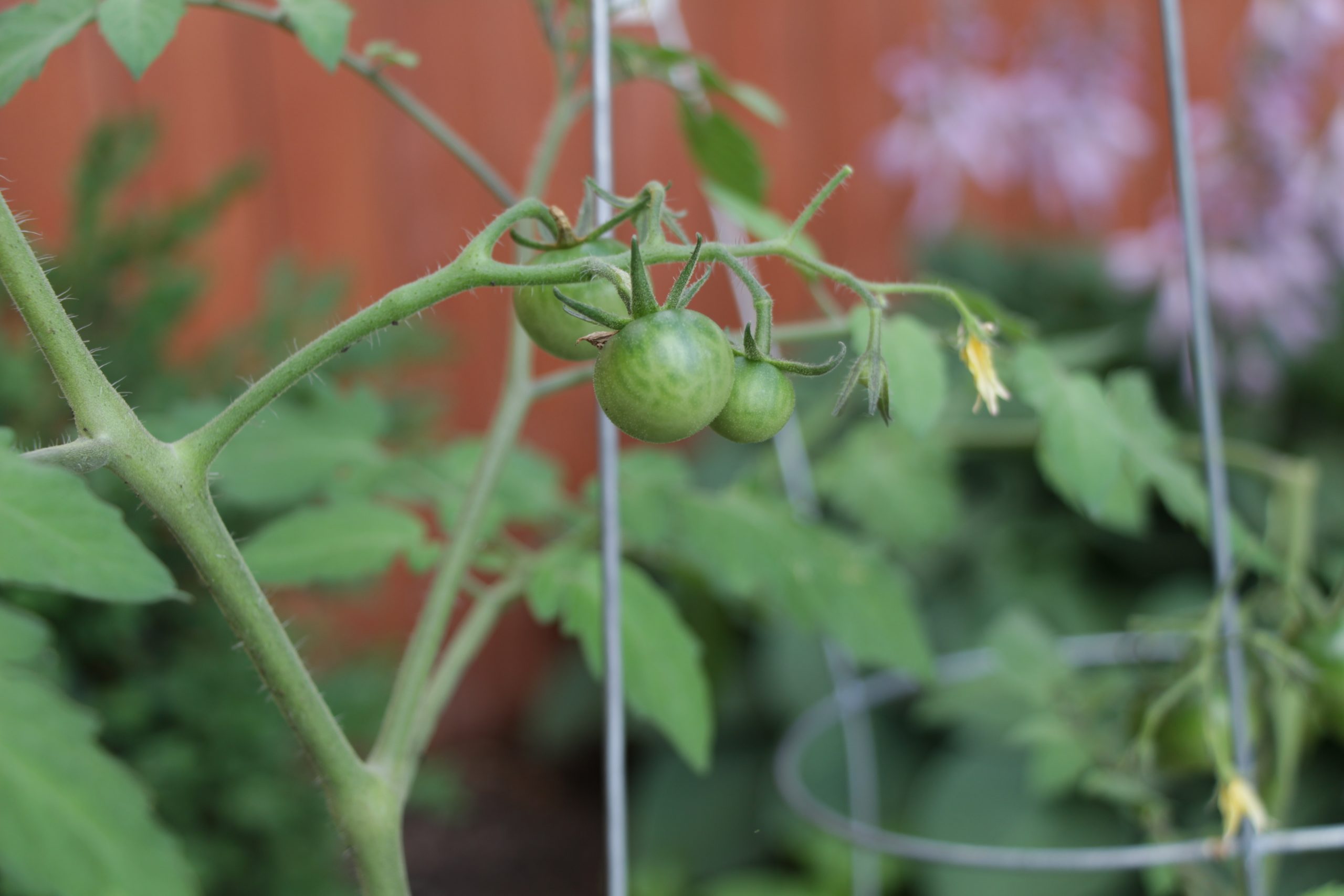

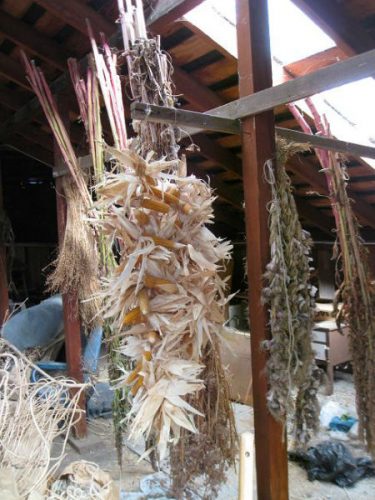
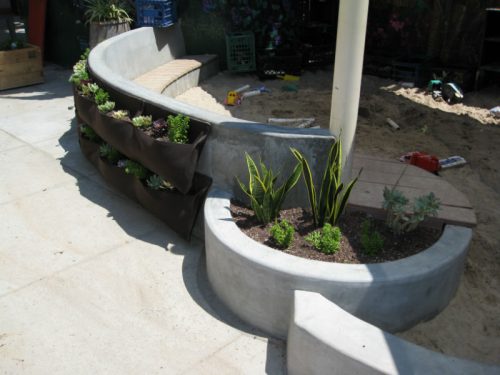
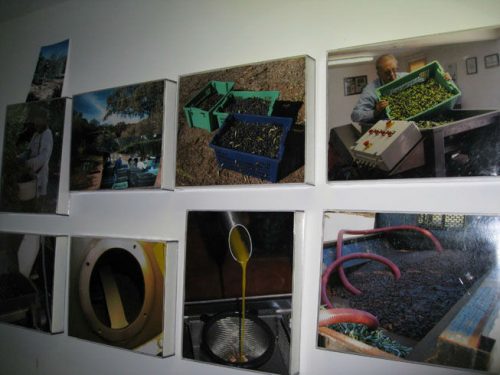
Helpful thank you. What’s the FIRST flower cluster? When I remove the tomatoes do I remove the little stems and collars attached or leave the little collar on. In the stores I can buy them both ways. With the green collars or without. What do you suggest?
A lot of people leave a little bit of stem on the tomato because some tomatoes are prone to splitting when you pick them. So try it both ways and see what works best for your varieties.